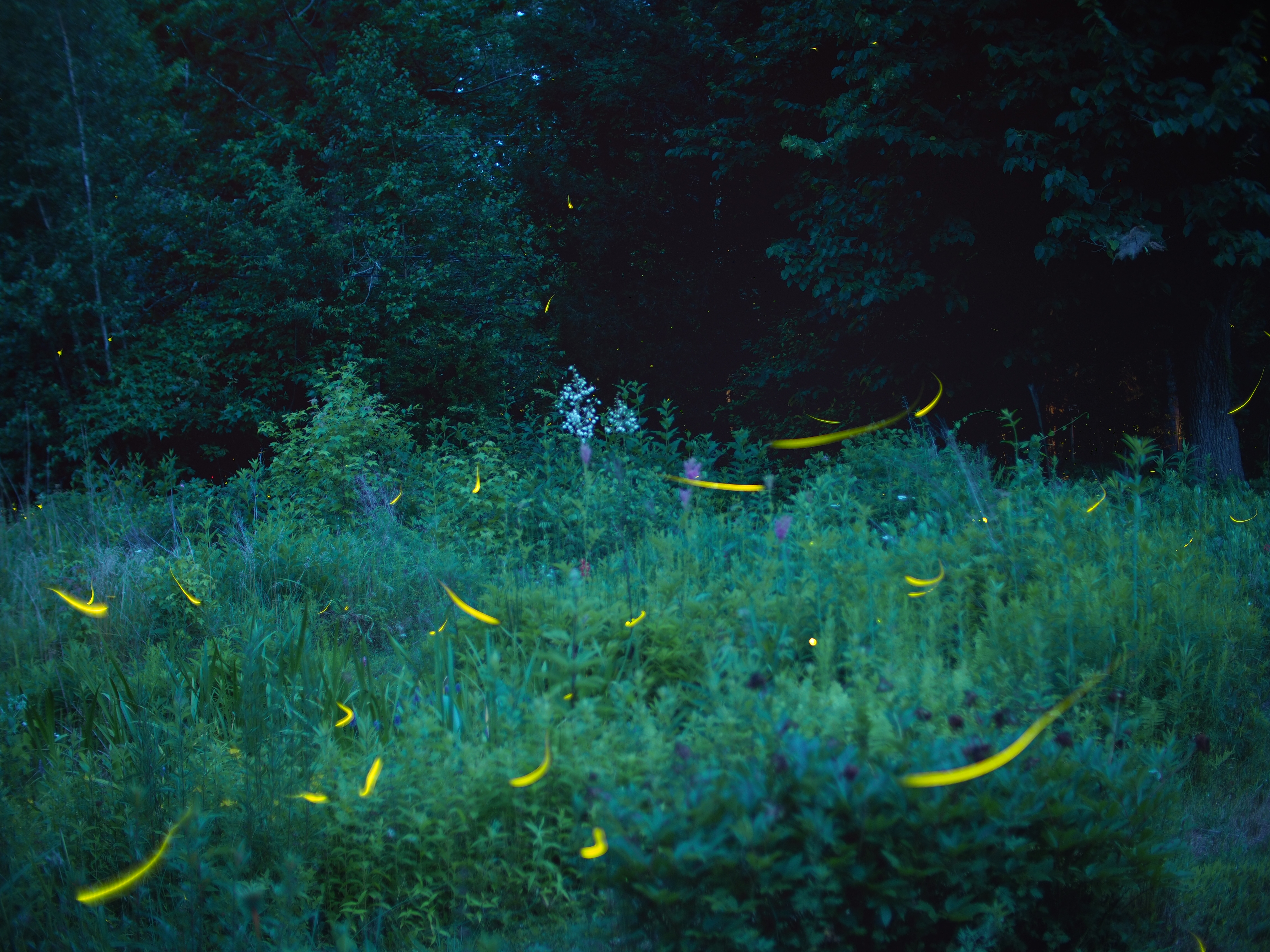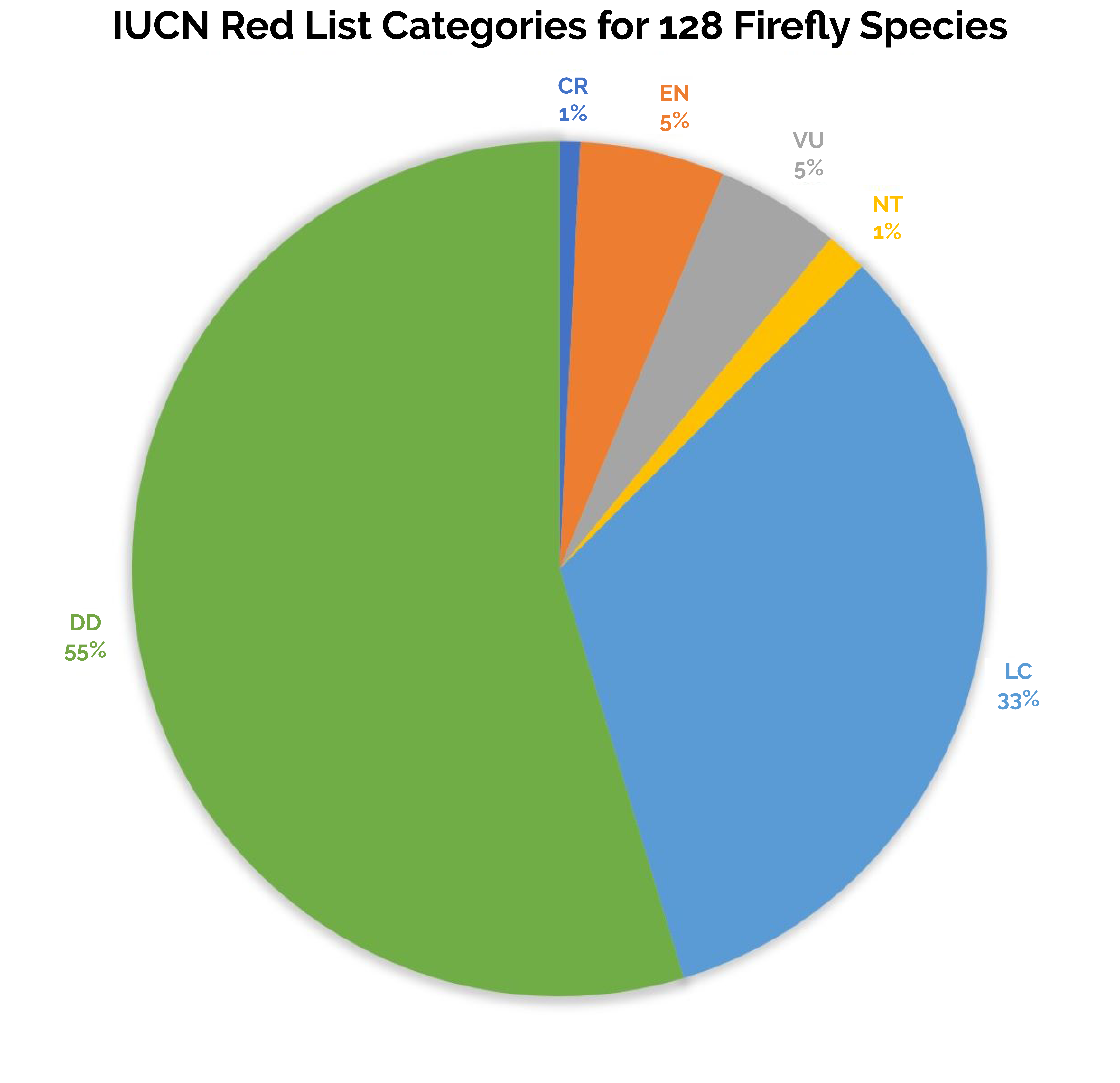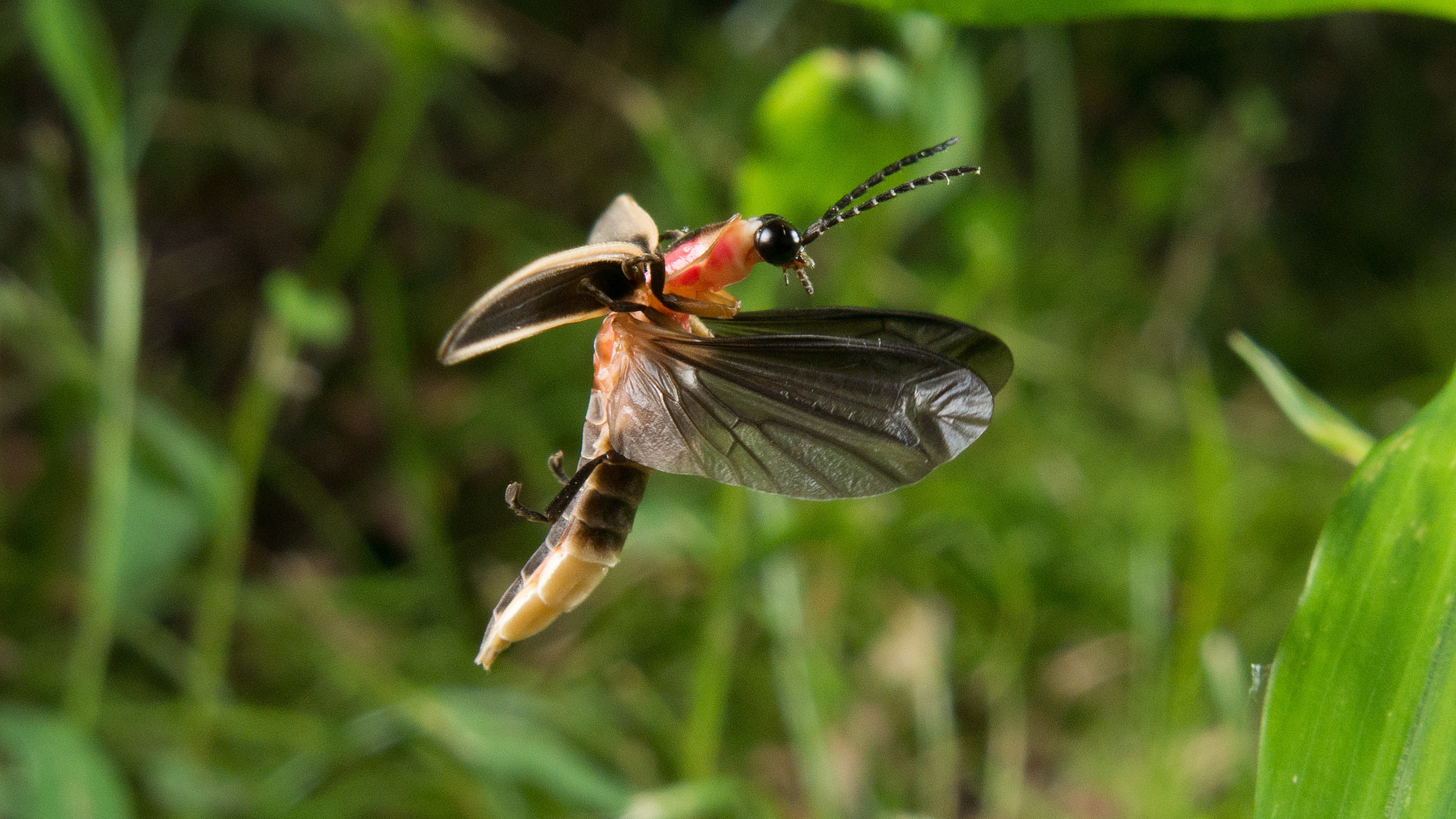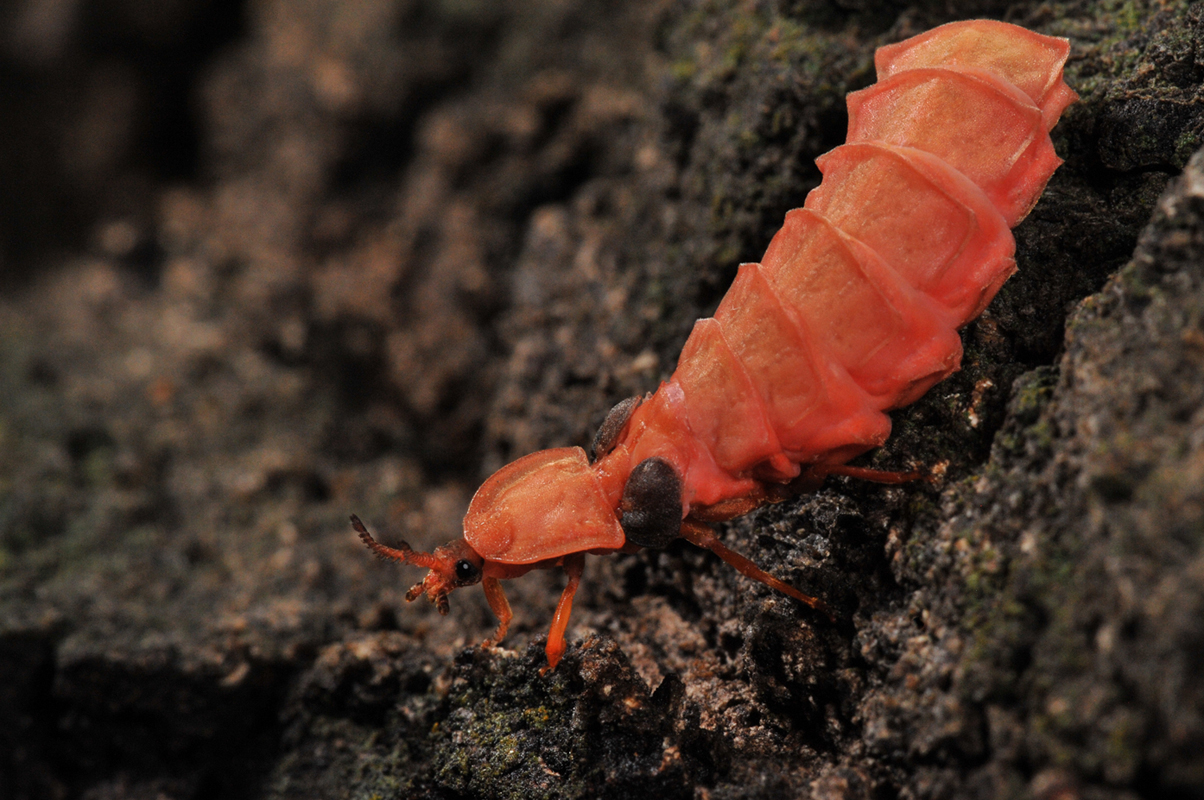What do the Florida intertidal firefly, Gila southwest spring firefly, and big dipper all have in common? They are all members of the North American firefly fauna, and they are among the first firefly species ever assessed for the International Union for Conservation of Nature (IUCN) Red List of Threatened Species, which was updated this week.
Fireflies are charismatic members of the Lampyridae family, a group of beetles that number over 2,200 species globally. Also known as lightningbugs or glow-worms, fireflies have a broad geographic distribution and are known from every continent except Antarctica. While more species have been recorded from tropical regions of the world, the United States and Canada are nonetheless home to at least 165 species (and two subspecies).

Fireflies are charismatic beetles best known for their bioluminescent flashes and light shows. (Photo: John Brandauer, Flickr [CC BY-NC-ND 2.0].)
Biologists from the Xerces Society and the ABQ BioPark began assessing species for the Red List in early 2020, working in partnership with Dr. Sara Lewis, the co-chair of the IUCN Firefly Specialist Group, and other members of the North American subgroup. This Red List update includes assessments for 128 species (77% of the described U.S. and Canadian firefly fauna), and we expect the remaining species assessments (39 total) to be published later this year.
Thus far, our findings show that the majority of species (55%) are Data Deficient (DD), highlighting a critical need for increased surveys, population monitoring, and basic life history research. Roughly a third of fireflies are categorized as Least Concern (LC)—a positive outcome that we aim to maintain through collaborative conservation efforts and other outreach and engagement strategies. The remaining species—16 in all—are categorized as threatened (Critically Endangered, Endangered, or Vulnerable) or Near Threatened (NT).

Of the 128 assessed species, 11% are threatened (CR+EN+VU), 1% are Near Threatened (NT), 33% are Least Concern (LC), and 55% are Data Deficient (DD). (Image: The Xerces Society.)
The IUCN is considered a global authority in species conservation statuses, and the Red List is the international inventory for this information. These assessments lay the foundation for future conservation action. With this information, we can prioritize efforts for the most at-risk species, while also working to fill data gaps and ensure that our common species remain common.
One of the most widespread and well-known fireflies in the U.S. is the big dipper firefly (Photinus pyralis), which was assessed as Least Concern. If you ever caught a firefly as a child in the eastern U.S., it was likely this species. It can be observed flying through open areas such as lawns and fields just before sunset on summer evenings, displaying distinct J-shaped flash patterns. At the other end of the spectrum, the most at-risk species that we assessed is the Bethany Beach firefly (Photuris bethaniensis). This species has a very narrow range and highly specific habitat requirements, is threatened by development and sea level rise, and has been lost from previously occupied sites—and is currently under consideration for Endangered Species Act listing. It is known from only a few sites along the Atlantic coastline in Delaware and is categorized in this assessment as Critically Endangered.

The big dipper, also known as the common eastern firefly, in flight. Note the large lantern at the tip of this firefly’s abdomen, which lights up this species’ characteristic J-shaped flash. (Photo: Terry Priest, Flickr [CC BY-SA 2.0].)
The majority of fireflies are so poorly known that they have been categorized as Data Deficient (DD). This includes many of our glow-worm and diurnal species, which do not receive as much attention as flashing species. Part of this may be due to cryptic morphologies or patchy distributions. Others appear quite rare, or are only active for a short period in areas where they may not be frequently encountered by humans. Whatever the reason, there is a real need to fill data gaps for these species, particularly because they may warrant conservation attention. During the assessment process, a number of these species were thought to be threatened, but a lack of recent survey effort or full understanding of their habitat and life history needs resulted in a DD categorization. Further research will indicate whether or not these species have heightened extinction risk. For example, western glow-worms such as Pleotomus nigripennis have flightless, ground-dwelling females that may be susceptible to trampling by cattle, vehicles, or people. In addition, because females have limited dispersal abilities, they may also be more vulnerable to threats like habitat degradation or drought, simply because they cannot move to another site with better resources. So little is known about specific threats, habitat associations, or other life history traits, however, that it is difficult to determine how species like this are faring.

The flightless adult female of the western glow-worm species Pleotomus nigripennis. Note the reduced wing pads. (Photo: Joe Cicero [used with permission].)
Based on our assessments, future research and conservation efforts should focus on gathering baseline data on firefly distributions and population sizes, addressing taxonomic questions, monitoring and protecting populations of at-risk species, preserving and restoring habitat, filling critical information gaps for data deficient species, and minimizing key threats such as habitat loss, light pollution, pesticide contamination, and the effects of climate change. There are simple steps that anyone can take to help fireflies, from turning off outdoor lights at night, to introducing a little wildness into your yard or garden. Contributing to community science projects like Firefly Watch and iNaturalist will help scientists track firefly distributions and population trends. Together, we can all work to ensure that fireflies and their habitats persist for generations to come.
Further Reading
Learn more about the 128 assessed species, check out the Red List of Threatened Species at www.iucnredlist.org and search for “firefly” or use this link to view all 128 species.
Read more about what fireflies need, the threats they face, and conservation efforts at www.xerces.org/fireflies.
Read about efforts to project the Bethany Beach firefly in Taking a Stand for Firefly Species Facing Extinction.




